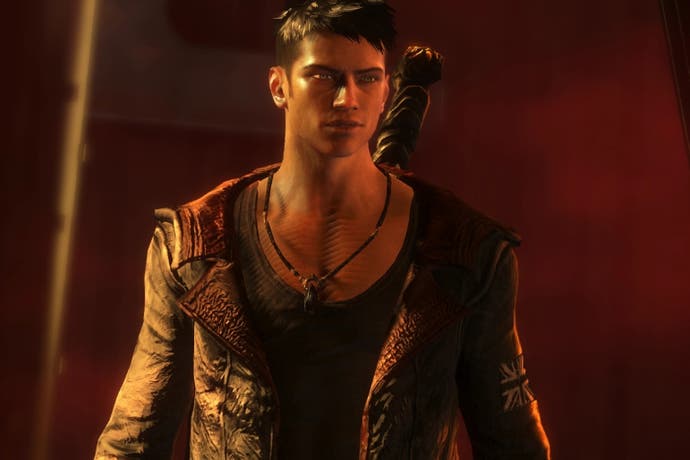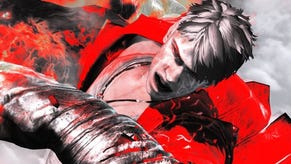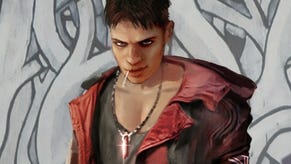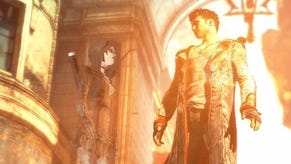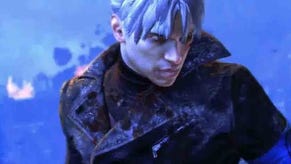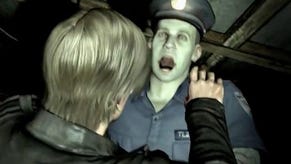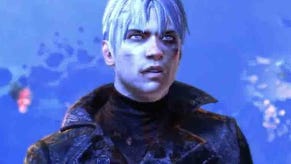DmC PC - the definitive Devil May Cry experience?
60FPS gameplay is back but is this enough to silence the controversy? Digital Foundry investigates.
With DmC Devil May Cry, Ninja Theory proved that it was possible to preserve the fast-paced signature gameplay of the Devil May Cry games while adopting a reduced 30FPS update, thus allowing for a significant leap in graphical quality, bringing features such as dynamic environments, object blur and higher precision lighting to the table. In effect, the developer managed to balance out pure visual spectacle with rewarding gameplay mechanics while giving the series a fresh new beginning. But for some of the hardcore Devil May Cry fanbase, this is not enough. For them, its 60FPS frame-rate and the associated low-latency controls are two fundamental pillars of the series that have defined the gameplay across four previous titles.
While we hope and expect the series to re-establish a full-on 60FPS experience on next-gen consoles, in the here and now the PC platform represents the only way for series die-hards to play DmC at that level without any compromise on overall graphical quality. As we've seen over the past few years it is commonplace to find mid-range gaming computers powering past the current batch of consoles to deliver smoother and more immersive gameplay - something we proved conclusively with our own £300 Digital Foundry PC. In this respect DmC is no exception to the rule, and similar to many console conversions, Ninja Theory's work scales nicely across a range of hardware. The question is, away from resolution and frame-rate, does the transition to PC bring with it any actual enhancements over the console games?
On first inspection the PC version of DmC features a number of interesting graphics options, consisting of HD textures, HD shadows, and HD anti-aliasing. In addition there are four overall presets to choose from: low, medium, high and ultra, allowing users to tailor the visual experience to get the best performance from their own particular hardware. The inclusion of the high-end sounding ultra preset hints at a significant upgrade over the console releases, but ultimately that doesn't appear to be the case. Instead, the level of visual quality doesn't so much scale up but scale down, with the core look of the game being very close to that of the consoles when run at its highest level. Presets below ultra begin to reduce various components - such as lighting, textures, and shadows - while the HD options only really provide a mild boost over the PS3 and 360 releases in some areas. Let's have a head-to-head look at the game, complete with a now-updated, triple-format comparison gallery.
"Despite the inclusion of a promising 'ultra' graphics preset, overall visual improvements over the console versions are fairly thin on the ground."
Alternative comparison:
Running at an equivalent 720p the PC version of DmC doesn't appear to provide the large visual leap over the consoles expected from the platform. With all graphical options maxed out the main improvements come with the inclusion of additional light sources and slightly higher quality shadows during gameplay and some of the cut-scenes. Evidence of higher resolution textures is also seen on some surfaces, along with a few extra environment details, but for the most part the core art is basically identical to the consoles with texture resolution fluctuating between 360 and PS3 quality and slightly beyond.
Disappointingly, despite the colossal increase in the amount of memory and GPU bandwidth available on a enthusiast level gaming PCs, there are still some hefty streaming issues present throughout the game, with LOD transitions being frequently visible, along with a similar 'texture swapping' phenomenon to what we saw on the PS3. In fact, the issues here can be even worse than on Sony's system, though this anomaly manifests itself more strongly on some stages than others.
Elsewhere we also find a few other visual oddities. Bizarrely, motion blur quality appears to be less impressive than the 360's implementation (but an improvement over PS3) while a shadow off-set bias along with the tight casting radius of self-shadows on the characters leads to noticeable artifacts and break up of these elements during some of the cut-scenes. On the flipside, there are higher-resolution shadows in play, which look smoother, but this regularly varies between scenes. The poor-quality FMV sequences of the console versions remain untouched and are simply upscaled to whichever resolution you happen to be playing at.
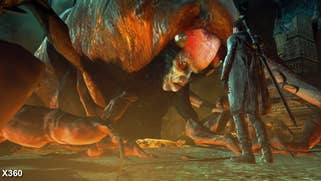

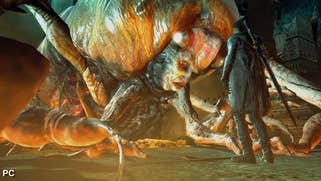
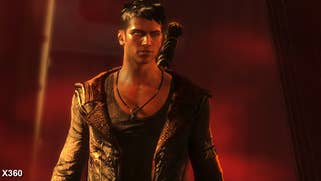

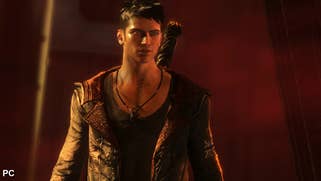
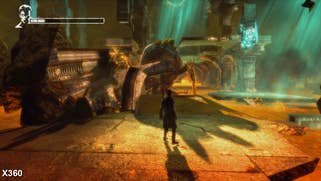
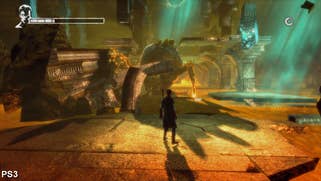
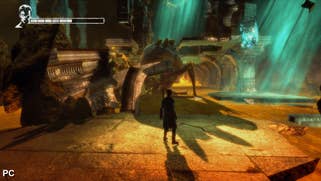
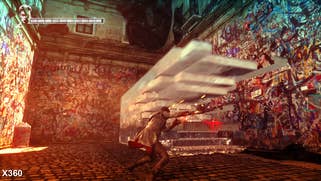
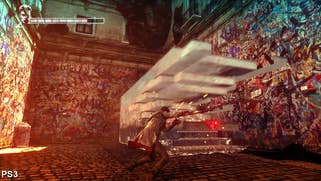
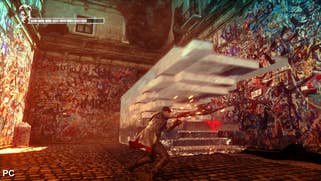
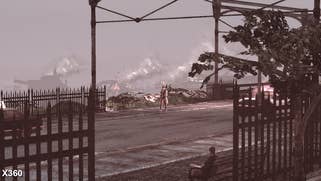
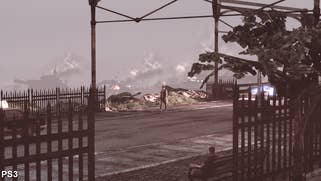
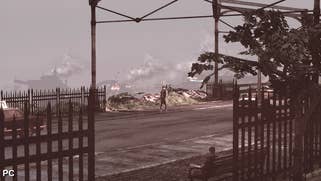
On a more general level, image quality gains are indeed apparent over the console releases: jaggies are better controlled in highly detailed environments and the post process anti-aliasing solution in play is generally more refined. On a pixel level the effect is very similar to the AA algorithm used on the PS3, the main difference being that edge detection is visibly stronger on the PC which leads to a slightly smoother image not unlike the one found on the 360 version. In order to really take advantage of the stronger anti-aliasing on offer it's best to play DmC at much higher resolutions than 720p, where the extra pixel precision reduces the amount texture blurring to create a sharper image.
The PC version of DmC running natively in 1080p in direct comparison to the 360 game scaled to the same resolution clearly shows off the benefits of the extra pixel resolution, with only one or two aspects of the rendering set-up limiting the upgrade in this area - mostly the frequent streaming issues which result in lower resolution textures being visible for longer than they should be.
As you'll see in the video below, the use of post-process AA means that images aren't quite as crisp as one would expect from a native 1080p experience, and in that respect we also find that the 360 game upscales quite well to this resolution for the same reason - the smoothed images produced by the FXAA helps to reduce some upscaling artefacts. However, the increase in clarity, crispness and detail on the PC game is certainly visible over that of the 720p console versions. In particular the increase in resolution allows the finer points of the artwork to stand out more confidently, further complementing the look of the game when higher quality textures are displayed. It's only when low resolution art is on display where we find the differences are less pronounced.
"At 1080p resolution, the highly detailed art assets gets the screen real estate to really shine."
Overall, we get the feeling that Ninja Theory has designed the PC game around maintaining the desired 60FPS on a broad range of specifications instead of pushing for a major leap in visual quality over the consoles - which actually makes sense since playing DmC at higher frame-rates is by far the biggest draw of purchasing the PC release. So while we don't see any major upgrades over the consoles when maxing out the game's settings, it does mean that very high frame-rates are much easier to achieve without needing expensive computer hardware to do so. This is also something that many games using the UE3 middleware have in common.
On our Core i5 and Radeon 7870 set-up we had no trouble running DmC at a locked 60FPS in 1080p with v-sync enabled, and managed to get frame-rates in excess of 200FPS at times in 720p at the expense of some severe tearing. Our budget DFPC, which uses a dual-core 2.8GHz Pentium CPU and a special guest appearance from a Radeon 7770 graphics card (our standard, and more powerful, 6770 was in use elsewhere) comfortably yielded a solid 60FPS at 1360x768 using the ultra preset. Resolutions significantly beyond that mostly hit the 60FPS target, but we did see a frequent dips, accentuated by v-sync. Since reducing GPU settings failed to have any significant affect on performance, it appears that our CPU is the limitation here.
Achieving high fame-rates without compromising on the overall look of the game is by far the biggest benefit to playing DmC on the PC, delivering smoother graphics and tighter gameplay as a result. Controls are certainly more responsive than on the consoles, with melee attacks crisply flowing into combos which are very rewarding to execute. We measured the delay between button presses and executing a sword slash on screen at between 100-116ms on the 360, in comparison to just 66ms on the PC with the game running at 60FPS. It should be possible to lower PC response even further by ditching v-sync and playing at higher rates on a 120Hz monitor, or else tweaking the buffered frames settings in the GPU control panel - but we'll leave that for the hardcore to toy with.
"Latency analysis suggests that the PC game typically offers a 50ms response advantage owing to its 60FPS frame-rate."
Unexpectedly, we encountered higher levels of latency when firing Dante's pistols compared to sword swipes and other similar attacks. Thankfully the differences don't really stand out enough to negatively impact on how well the game plays, although performing complex combos using both Dante's guns and other weapons might require a bit of adjustment for expert players. The difference in response times between these moves might simply be a case of Ninja Theory purposely adjusting the delay to create a different feel for DmC over previous games.
DmC Devil May Cry on PC - the Digital Foundry Verdict
In a move that will surely please die-hard Devil May Cry fans out there, DmC on PC brings the new game closer to the frame-rate and latency standards set by its predecessors, bringing back fluid 60FPS visuals along with highly responsive gameplay absent from the recently released console versions of the game - and without requiring an expensive PC to do so. Factoring in a decent older quad-core CPU (or perhaps the more capable Core i3s), even PC owners with lower spec graphics cards should also be able to enjoy the welcome boost in performance with few downsides.
"The PC version of DmC restores the latency and frame-rate advantages of older Devil May Cry titles and helps to make a great game even better."
Unfortunately, outside of running the game in much higher resolutions, the boost lower latency gameplay isn't joined by any revelatory increase in visual quality - the baseline assets seen here are pretty much in line with those seen on the PS3 and 360 versions, just with a few upgrades dotted about from time to time. We're also a little disappointed at some of the bugs we encountered, which did impact on the quality of the overall presentation.
But despite a few graphical quirks, the PC version of DmC still commands a visible advantage over the PS3 and 360 releases. Move beyond the 720p limitations of the consoles and we have a game that looks sharper, more detailed, and that runs far smoother on a variety of hardware configurations. In that respect, DmC on the PC brings back even more of that classic Devil May Cry feel but with all of the tasty visual upgrades that make this remake stand out from traditional 60FPS console titles.
So is this truly the version to buy for series die-hards? It's an interesting question. We reckon that an already decent console control interface does see palpable improvement on PC that brings response back into line with the original games; to our minds this definitely feels like a Devil May Cry game, but despite being respectful to the source material perhaps it doesn't really look like one. DmC remains a Westernised reboot of a beloved Japanese franchise, with a mindset and aesthetic significantly removed from the vision of the original creators. But beneath the changes our contention is that this is an excellent game that can be just as technical and as brutally uncompromising as its predecessors - and the PC version clearly offers the best experience.
